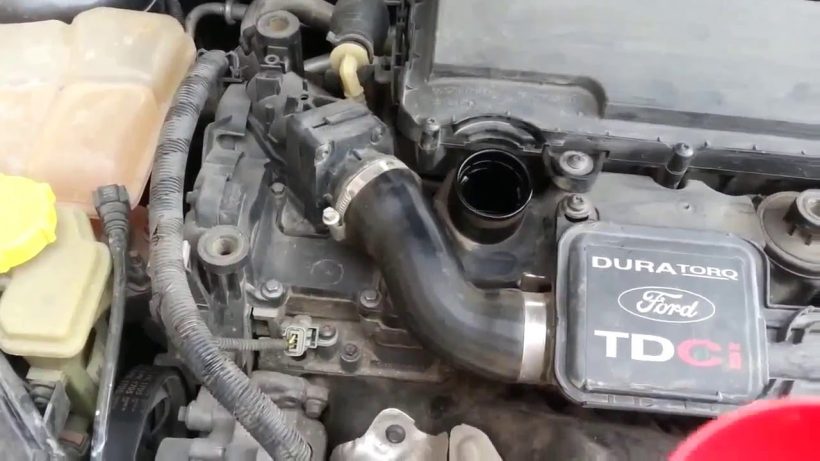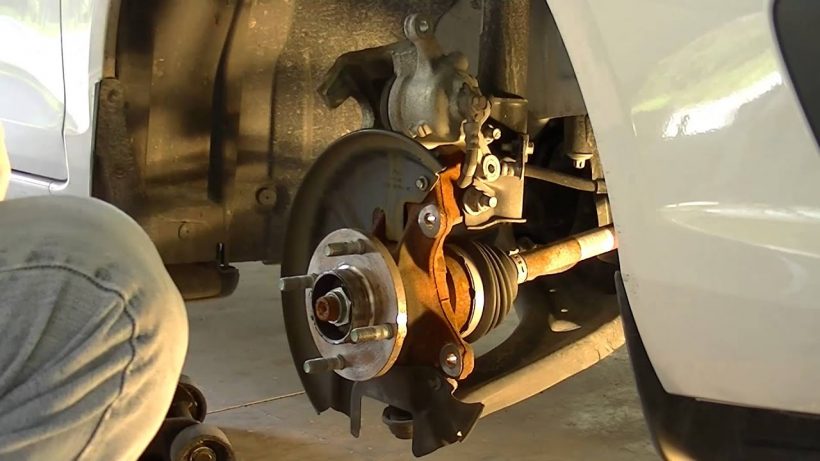Routine Maintenance Guide for Sixth-Gen Ford Fiesta (2013-2017)
The 2013-17 Ford Fiesta is a subcompact car with a European pedigree. Ford took the experience of fine-tuning the Fiesta overseas and brought the car to the US in hopes of challenging Asian subcompact cars for young buyers. The result is an attractive car with excellent fuel mileage that is also fun to drive.
The Ford Fiesta is a great buy on the used car market when the vehicle has been adequately maintained. Before you consider buying a Ford Fiesta, it’s important to understand the routine maintenance these cars require so that you can identify if the previous owner has kept the vehicle in good shape.
Once purchased, the easiest way to maintain your Fiesta is using a Ford factory service manual. It provides the correct step-by-step procedures from EmanualOnline you need to ensure your Fiesta lasts as long as possible.
Routine Maintenance for a Ford Fiesta

Worth mentioning, the Ford Fiesta is a reliable and efficient vehicle ideally situated to challenge budget cars from other brands. Most owners report few, if any, significant problems with regular maintenance.
However, most Ford Fiestas are used primarily for short trips around town in stop-and-go traffic. It might come as a surprise, but this is the most wear-inducing driving style. Vehicles used for long-distance drives or that see regular, sustained freeway miles tend to have cleaner engine parts and require less overall maintenance. However, they usually hit critical service needs quicker.
The owner’s manual for your Ford Fiesta will give you insight into the types of repairs you’ll need to make to keep your car running correctly, but it won’t tell you how to do them yourself. Meanwhile, an official Ford repair manual will provide you with the information you need along with diagrams explaining how components are assembled and removed and what to look for when diagnosing problems.
To help you with that, we have consulted with owners and repair shops to find the most common Ford Fiesta issues. And if you need to get your hands on Ford workshop manuals to make DIY repairs on your Fiesta.
Ford Fiesta (2013-17) Service Intervals & Recommended Maintenance
There are a few things that all owners of these vehicles need to know about, including the most common regular maintenance steps and how often you should do these procedures.
Oil Changes

A Ford factory service manual recommends oil changes every 12,500 miles or once per year if you drive less than that, taking into account that you are using fully synthetic oil and an OEM oil filter. Of course, if you are on a budget, aftermarket filters will do just fine but you might need to shorten that interval.
Vehicles driven primarily around town need more frequent oil changes than highway-driven cars due to the increased wear and tear. We recommend that owners who drive less than 12,000 miles per year and primarily use their Fiesta for their daily local commute should plan to change their oil every 5-6,500 miles or six months. f you decide to use mineral oil rather than synthetic, plan for at least three oil changes a year instead.
Checking Other Fluids, Filters, and Tires
The shop manual Ford provides to service technicians gives you more information about checking other fluids than your owner’s manual will.
Ford recommends checking fluids every 250 miles but of course, it’s playing it safe here. Unless you have a problem, fluid levels shouldn’t move that fast. Still, plan on monthly inspections to ensure that the clutch and brake fluid reservoirs are full and the fluid is clean. Inspect the cabin air filter and air cleaners regularly, keep an eye on the tread on your tires to prevent blow-outs, slow leaks, and ensure you have a good grip. It’s also a good idea to check the coolant level and condition in your radiator at least twice a year.
Not only will a Ford Fiesta service manual give you the correct inspection intervals, but it also tells you how to replace fluids and what to look for so you know if they need to be replaced in the first place. Keep in mind that a sudden change in fluid levels can indicate a more severe problem—just adding more will rarely be enough. You might want to get that fixed before your Fiesta breaks down and leaves you stranded. Luckily, there’s usually a section in the repair manual, right beside the “how to inspect and refill” block, explaining what to do if the level is significantly lower than it should as well as possibles causes and potential fixes.
Inspecting the Brakes

One of the things many people skip regularly is inspecting the condition of the brake components. Of course, you can just wait until you can hear your brakes grinding. But doing so will usually result in a more extensive repair bill. Hence, it is good to remove the wheels once per year and inspect the brake rotors and pads.
Replacing the brakes is a regular maintenance task that might seem like a challenge for newbies, but it is actually quite straightforward when you have an official Ford repair manual in hand and a couple of basic tools. Sixth-gen Ford Fiestas are known to require brake pads replacement about every 45,000 miles for short-trip vehicles and about 65,000 miles if primarily driven on the highway.
Major Service You Need to Know
Ford recommends that you complete a timing belt replacement at 100,000 miles. In our experience dealing with these cars, you are money ahead to change the timing belt sooner. Numerous owners have reported timing belt failures around 85,000 miles, which can destroy the engine.
Instead, play it safe and change the timing belt at 65,000 miles and again at 120,000 miles—you’ll thank us later.
Worth mentioning, this isn’t a simple procedure. Still, it can be done by the casual DIYer when using a Ford factory service manual and a lot of patience. Make sure to identify all the components you remove and you should be good to go. When in doubt, always refer back to the step-by-step procedure.
How to Save Money of Routine Maintenance

You’ll be surprised how much money you can save over the years simply by performing basic maintenance by yourself. And sing a Ford workshop manual, you won’t have to second-guess yourself. You’ll have the same information that your dealership’s mechanics use every day at your fingertips.
Moreover, when you do the repairs yourself, you have much more control over the quality of the parts used and how frequently they are replaced. It’s pretty common for mechanics to know tricks to get a job done quicker and with less effort, which is good for making more money but doesn’t always mean the job is done right.
With a basic set of quality hand tools and a Ford factory service manual for your Fiesta, you’ll be able to do the job correctly at home. You’ll know that the job was done right and that you didn’t take any shortcuts that might have missed critical steps. Besides, there is a great deal of pride involved in standing back at the end of the day and knowing you did the job yourself.
Final Thoughts
The 2013-17 Ford Fiesta is a very good subcompact vehicle that provides a fun driving environment. They are robust little cars you can count on for years when routine maintenance is done correctly. I said it a lot but I will say it again: getting a Ford factory service manual should be the first step you take when you decide to buy a Ford Fiesta. They are reliable, yes, but they are only so when they are properly and regularly maintained.
With regular maintenance, you will get hundreds of thousands of miles out of your Fiesta before it requires significant service. However, infrequent oil changes, sub-par components use and cheap fluids use are the most common cause of short-lived Ford Fiestas. You’ll save much more in the end by doing the job yourself, save on repair shop bills and re-invest it in more frequent maintenance and quality replacement parts.
